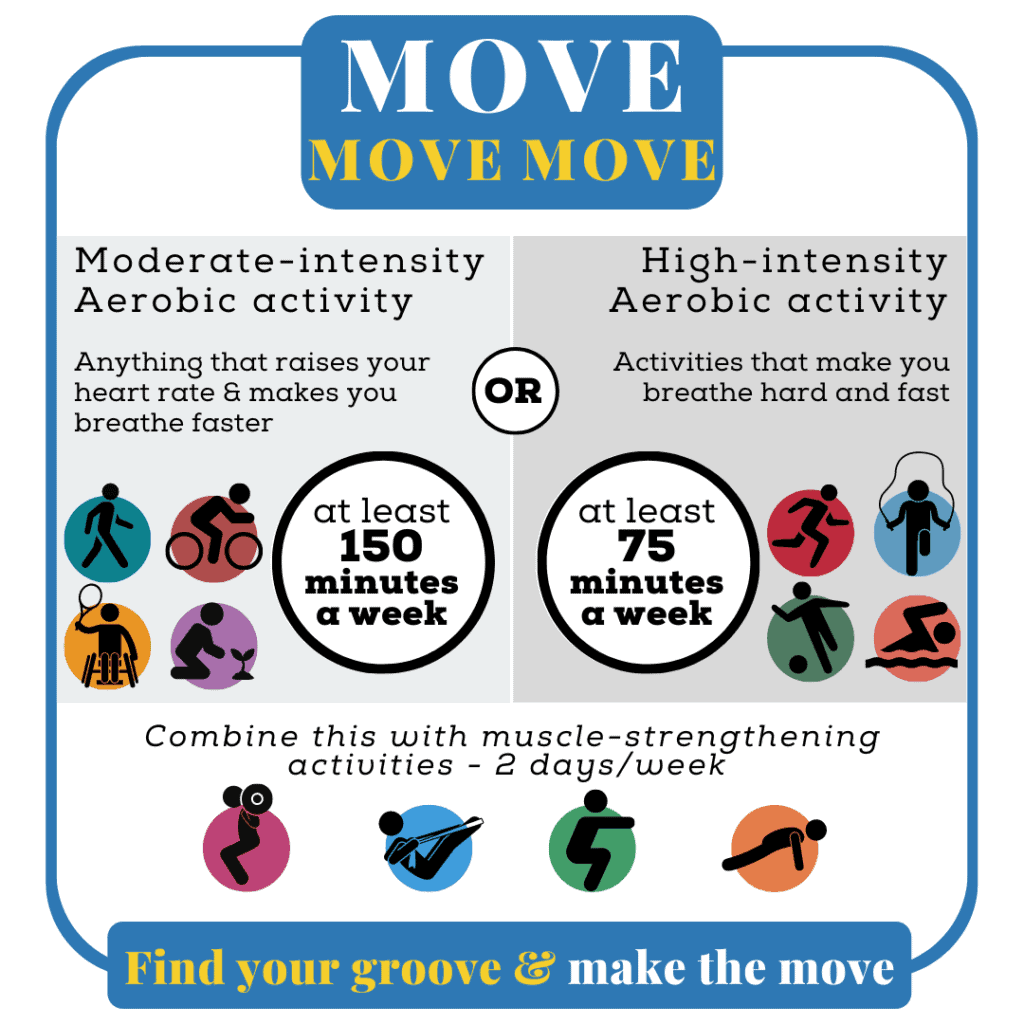Abstract
The simplest of daily physical activity almost all people accomplish is walking. The advancement of technology has made it easier to track the number of daily steps with wearable devices. A study recently published in JAMA discovered that individuals taking 7000 steps or more per day lowered their risk of death.
How Does Physical Activity Prevent Health Conditions & Mortality?
The health benefits reaped from regular physical activity, be it moderate- or vigorous-intensity, are many. From reducing the risk of heart diseases to promoting mental wellbeing, the list is long.
According to the CDC, almost a dozen of health conditions can be prevented or managed with routine physical activity:
- Coronary heart disease
- Colon cancer
- Heart attack
- Diabetes
- High blood pressure
- Hip fractures
- Obesity
According to some stats, about 6-10% of the health burden of chronic diseases worldwide and 9% of premature death can be attributed to physical inactivity.
The 2019 Physical Activity Guidelines for Americans recommends adults to engage in weekly 150-300 minutes of moderate-intensity physical activity or 75-150 minutes of vigorous-intensity physical activity.
Image: Physical Activity Guidelines for Americans
Every individual has a different body type and consequently different bodily needs. Therefore, the realization of a personalized therapeutic approach has aided in the fitness world too.
A strength-based approach uses healthcare professionals in close collaboration with clients - wherein the focus is put on clients’ abilities, objectives, and present situation.
Strength-based personal approaches to exercise regimes have been observed to bring about more excellent patient outcomes.
Xcode Life’s Gene Fitness Report analyzes your body’s genetic predisposition for fitness traits and gives personalized recommendations. Click here.
Physical Activity & Reduction in Mortality Risk: Previous Studies
A study in 2020 found a reduction in mortality risk by 40% when subjects followed the 2018 Physical Activity Guidelines for Americans and engaged in both aerobic and muscle-strengthening activities. Further, individuals who engaged in either aerobic or muscle-strengthening activities decreased their mortality risk by 29% and 11%, respectively.
According to data, between 1997-2014, only 15.9% of 479,856 Americans followed the recommended physical activity guidelines.
A 2015 study on European subjects showed a 14% reduction in mortality risk with only 15 minutes/day of exercise.
Further, in a study done in 2020 on a group of 70-years olds, a higher step count was associated with a reduced incidence of diabetes.
The Study: Per Day 7000 Steps Or More Can Reduce Mortality Risk
The study led by Amanda Paluch was part of a Coronary Artery Risk Development in Young Adults (CARDIA) study which drafted subjects from four States - Alabama, Illinois, Minnesota, and California.
The study analyzed a subset of 2110 participants belonging to the age group of 38-50 years. Out of 2110, 1205 participants were women, and 888 were Black.
Study Conditions
The researchers grouped the participants into three categories:
- Low (<7000 steps per day)
- Moderate (7000 to <10,000 steps per day)
- High (>=10,000 steps per day)
Between 2005-2006 and a follow-up in 2015-2016, participants wore an accelerometer for seven days to measure average step count. The accelerometer was only allowed to be removed during sleep and any water-related activities.
At the end of the follow-up period of an average of 10.8 years, 72 participants had died.
Additionally, the participants’ highest number of steps per minute in any 30 minutes was measured. The time duration each day in which the participants took 100 steps a minute was also tracked.
The researchers considered several other health-related factors like alcohol intake, weight & BMI (body mass index), smoking, cholesterol & fasting glucose levels, blood pressure, medication history & heart disease.
Findings of The Study
Compared to participants who took less than 7000 steps each day, participants who took at least 7000 steps each day reduced mortality risk by 50-70%.
Neither a step count exceeding 10,000 steps each day nor the step intensity had any additional impact on reducing mortality risk.
The study’s findings bear clinical significance as remote patient monitoring devices are gaining ground. Wearable devices to track daily step count is an easy way to track and promote routine physical activity. While many individuals may be reluctant to engage in planned-out exercise regimes, walking to accomplish step goals can be an acceptable form of daily activity.
Summary
- Routine physical activity has multiple health benefits, including reducing the risk of heart diseases and promoting mental wellbeing.
- A strength-based approach for physical activity depending on individual abilities and objectives has benefited more in the long run.
- Many studies have confirmed the reduction of mortality risk in light of routine physical activity.
- The study discovered that a minimum of 7000 steps each day could reduce mortality risk by 50-70%.






